pku3517(约瑟夫环)
来源:互联网 发布:red flag linux 编辑:程序博客网 时间:2024/06/06 16:08
Description
Let’s play a stone removing game.
Initially, n stones are arranged on a circle and numbered 1, …, n clockwise (Figure 1). You are also given two numbersk andm. From this state, remove stones one by one following the rules explained below, until only one remains. In step 1, remove stonem. In step 2, locate thek-th next stone clockwise from m and remove it. In subsequent steps, start from the slot of the stone removed in the last step, makek hops clockwise on the remaining stones and remove the one you reach. In other words, skip (k − 1) remaining stones clockwise and remove the next one. Repeat this until only one stone is left and answer its number. For example, the answer for the casen = 8, k = 5, m = 3 is 1, as shown in Figure 1.
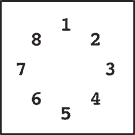
Initial state
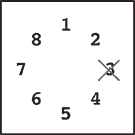
Step 1
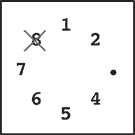
Step 2
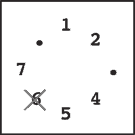
Step 3
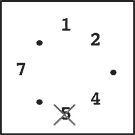
Step 4
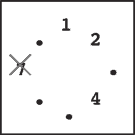
Step 5
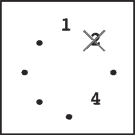
Step 6
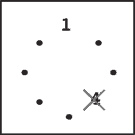
Step 7
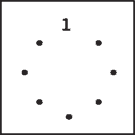
Final state Figure 1: An example game
Initial state: Eight stones are arranged on a circle.
Step 1: Stone 3 is removed sincem = 3.
Step 2: You start from the slot that was occupied by stone 3. You skip four stones 4, 5, 6 and 7 (sincek = 5), and remove the next one, which is 8.
Step 3: You skip stones 1, 2, 4 and 5, and thus remove 6. Note that you only count stones that are still on the circle and ignore those already removed. Stone 3 is ignored in this case.
Steps 4–7: You continue until only one stone is left. Notice that in later steps when only a few stones remain, the same stone may be skipped multiple times. For example, stones 1 and 4 are skipped twice in step 7.
Final State: Finally, only one stone, 1, is on the circle. This is the final state, so the answer is 1.
Input
The input consists of multiple datasets each of which is formatted as follows.
n k m
The last dataset is followed by a line containing three zeros. Numbers in a line are separated by a single space. A dataset satisfies the following conditions.
2 ≤ n ≤ 10000, 1 ≤ k ≤ 10000, 1 ≤ m ≤ n
The number of datasets is less than 100.
Output
For each dataset, output a line containing the stone number left in the final state. No extra characters such as spaces should appear in the output.
Sample Input
8 5 3100 9999 9810000 10000 100000 0 0
Sample Output
1932019
Source
#include<iostream>using namespace std;int n,k,m;int Joseph(){int ret=0,i=2;while(i<=n){ret=(ret+k)%i;i++;}return ret+1;}int main(){int ans;while(~scanf("%d%d%d",&n,&k,&m)){if(!n&&!m&&!k)break;n--;ans=Joseph();ans=(ans+m)%(n+1);if(!ans)ans=(n+1);printf("%d\n",ans);}return 0;}- pku3517约瑟夫环问题
- pku3517(约瑟夫环)
- 约瑟夫问题、约瑟夫环
- 约瑟夫环
- 约瑟夫环
- 约瑟夫环
- 约瑟夫环
- 约瑟夫环
- 约瑟夫环
- 约瑟夫环
- 约瑟夫环
- 约瑟夫环
- 约瑟夫环
- 约瑟夫环
- 约瑟夫环
- 约瑟夫环
- 约瑟夫环
- 约瑟夫环
- android 中的自动提示框
- How to assign the different php files
- cocos2d-x CCMenu 菜单
- 黑马程序员之其他对象(System,Date,Calendar)
- Ubuntu打开doc和ppt等文件的方法
- pku3517(约瑟夫环)
- 主从同步出现一下错误:Slave_IO_Running: Connecting
- Problem B: 评委打分
- CV人物志
- 编程高手无捷径
- C语言程序设计 全书课后习题答案!!
- Java中String与StringBuffer的区别
- 评:Linux多线程服务端编程
- Problem C: 很简单的一道题


